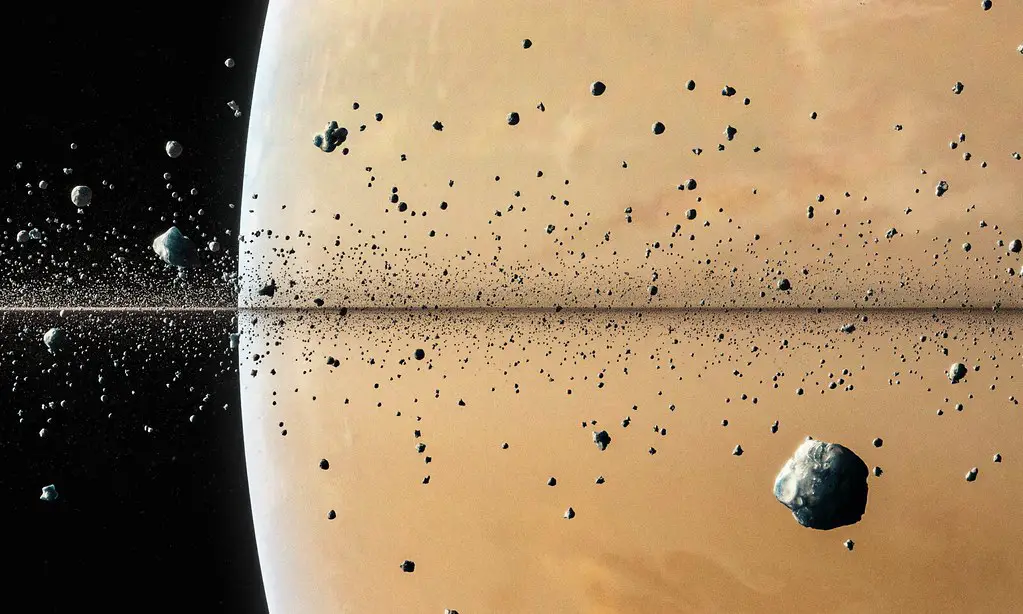Saturn is the sixth planet from the sun and the second-largest planet in our solar system. It is famous for the brilliant and eye-catching golden color that it possesses. Few people may ponder the question of why this gas giant has such a particular hue, despite the fact that several individuals have marveled at the splendor of Saturn and its famous rings. The answer can be found in a confluence of factors, such as the make-up of its atmosphere, the kind of clouds that form, and the way that sunlight is scattered.
Examining Saturn’s atmosphere is the first step in comprehending the reason behind the planet’s yellow hue. In the same way that Jupiter’s atmosphere is predominately made up of hydrogen and helium, Saturn’s atmosphere is also predominantly made up of these two elements. However, Saturn has a distinct hue because it has a far higher concentration of certain chemicals, such as ammonia, methane, and ethane. These compounds contribute to Saturn’s coloration.
Ammonia is a significant component in the yellow coloration of Saturn. In the top layers of a planet’s atmosphere, ammonia gas is more effective at absorbing light of shorter wavelengths, such as blue and green, than it is at blocking light of longer wavelengths, such as red. Because of this, the light that is scattered and finally reaches our eyes seems yellow. There is no question that ammonia plays a large role in Saturn’s coloration, but the exact nature of its contribution to the planet’s hue is still the subject of ongoing research in the scientific community.
The complex cloud patterns that Saturn possesses are another component that contributes to the planet’s golden hue. Saturn is subjected to strong wind currents, which help to sculpt the cloud bands and storms that it endures. The clouds that are found in its atmosphere are made up of ammonia ice crystals in addition to other types of aerosols. Because these cloud particles both reflect and scatter the sun’s rays, the overall color that we see is the result of their interaction with the different wavelengths of light. The yellowish hue is caused by the interaction of sunlight with a combination of ammonia and other atmospheric components.
Furthermore, the total brightness of Saturn can have an effect on how one perceives the hue of the planet. It is a highly reflective object due to the cloud layers that cover the planet as well as the sunlight that is reflected off of its rings. When viewed from a greater distance, Saturn’s increased reflectivity can cause the planet’s yellow hue to look even more vibrant, adding to the planet’s already arresting appearance.
It is important to keep in mind that the exact shade of yellow can change depending on a variety of factors, such as the viewing angle and the conditions of the atmosphere. The exact hue that an observer sees may vary depending on a number of factors, including the presence of other atmospheric components and differences in cloud thickness. These aspects contribute to the dynamic quality of Saturn’s appearance and give researchers important new insights into the processes that take place in the planet’s atmosphere.
Saturn is easily distinguished from the other planets in our solar system due to the golden color it possesses. Jupiter, for example, presents a mostly white look as a result of its ammonia ice clouds, whilst Venus displays a yellowish-white appearance primarily as a result of its sulfuric acid clouds. Each planet in our solar system presents its own one-of-a-kind show because to the complex interactions that take place between its many atmospheric components, cloud patterns, and systems that scatter sunlight.
In conclusion, the characteristic yellow hue of Saturn is caused by the composition of its atmosphere, the creation of its clouds, and the scattering of sunlight across its surface. The presence of ammonia gas, in addition to cloud particles consisting of ammonia ice crystals and other aerosols, interacts with the sun to produce the yellowish tinge that captivates astronomers and anyone who are interested in space in general. Scientists get a deeper knowledge of the intricate dynamics that shape our celestial neighbors as a result of their research into and efforts to explain the secrets of the brilliant coloration of Saturn.
![]()
